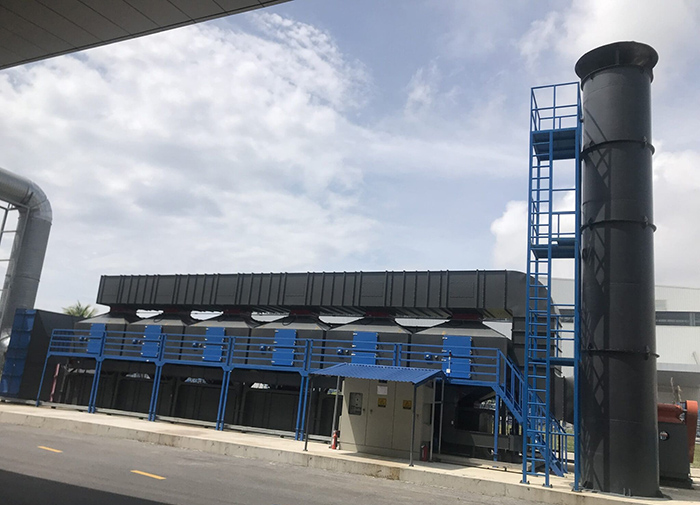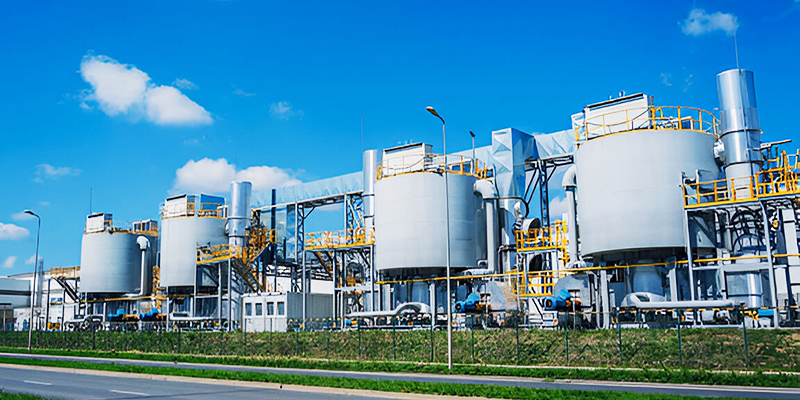Gas handling systems are an integral part of industrial operations across multiple sectors such as wastewater treatment, chemical manufacturing, power generation, and petrochemical refining. These systems are designed to handle, process, and control industrial gases, ensuring safe disposal, storage, and conversion of hazardous gases into less harmful forms. The ability to efficiently handle gases is essential for maintaining safety standards, optimizing industrial processes, and complying with environmental regulations.
Why Are Gas Handling Systems Important?
Industrial processes often result in the release of various gases, including hazardous or polluting substances like sulfur dioxide (SO₂), nitrogen oxides (NOₓ), carbon dioxide (CO₂), and volatile organic compounds (VOCs). Without a proper handling mechanism, these gases can pose significant risks to the environment and public health. An efficient gas handling system ensures:
- Emission Control: Helps in reducing harmful emissions, enabling compliance with environmental standards.
- Operational Safety: Prevents the leakage of dangerous gases, protecting the workforce and industrial equipment.
- Regulatory Compliance: Many industries are subject to strict local and international regulations related to emissions and environmental impact. Gas handling systems are crucial for meeting these requirements.
Key Components of Gas Handling Systems
Gas Collection and Capture:
This involves capturing gases produced during industrial processes before they are emitted into the atmosphere. Effective gas collection systems ensure that even trace amounts of harmful gases are captured.
Filtration and Scrubbing:
The captured gases are then processed using advanced filtration and scrubbing technologies. Scrubbers, such as wet scrubbers and dry scrubbers, are used to clean the gas by neutralizing or removing pollutants. These systems are highly effective for managing sulfur dioxide and other acid gases.
Compression and Storage:
Once the gases are cleaned, they are either reused in other processes or safely stored. Compressed gas is often stored in specially designed tanks or cylinders to prevent leakage. Storage solutions are critical for managing gases like hydrogen or natural gas, which can be hazardous in large amounts.
Gas Conditioning:
Conditioning refers to adjusting the temperature, pressure, or humidity of gases to ensure they can be safely processed or transported. This step is especially important in industries that transport gases through pipelines, such as natural gas providers.
Monitoring and Control Systems:
Modern gas handling systems are equipped with sophisticated monitoring technology to ensure safe operation. These include gas detectors, sensors, and automated control systems that monitor gas levels in real time, triggering alarms or safety protocols if dangerous thresholds are reached.

Types of Gas Handling Systems
Ventilation Systems:
Designed to ventilate or expel gases safely from enclosed environments, ventilation systems are critical in industries such as mining and chemical processing. They ensure that hazardous gases are kept at safe levels within operational areas.
Exhaust Gas Treatment Systems:
Exhaust gas handling is a key component for industries like power generation, where large volumes of gases are emitted. These systems often include catalytic converters or scrubbers to neutralize harmful substances before gases are released into the atmosphere.
Flare Systems:
Commonly used in oil and gas refineries, flare systems are essential for safely burning off excess gases that are either unusable or present in quantities that cannot be stored. These systems prevent dangerous pressure build-up and reduce the release of raw, harmful gases into the environment.
Gas Recovery Systems:
Some industries employ recovery systems to capture and reuse gases, reducing waste and improving operational efficiency. This is especially important in industries such as chemical manufacturing, where gases like hydrogen or carbon dioxide can be reintegrated into other production processes.
Key Considerations for Gas Handling System Design
When designing or selecting a gas handling system, several factors need to be taken into account to ensure the system’s effectiveness and compliance with safety standards:
Type and Composition of Gases:
The nature of the gas being handled—whether it is corrosive, flammable, or toxic—will dictate the type of materials and technologies used in the system. For example, acidic gases like sulfur dioxide require corrosion-resistant components.
Process Volume:
Different industries produce varying volumes of gas, and handling systems need to be designed to accommodate the specific output. A system designed for a large-scale power plant will differ significantly from one used in a small chemical manufacturing facility.
Regulatory Requirements:
Each industry must adhere to local, national, and international regulations concerning gas emissions and safety. System designs must incorporate compliance with environmental agencies like the Environmental Protection Agency (EPA) or equivalent governing bodies.
Safety Protocols:
Redundancies and safety measures, such as pressure relief valves and automated shutoff systems, are critical to preventing dangerous gas leaks or equipment malfunctions.

Benefits of Implementing Advanced Gas Handling Systems
Environmental Protection:
Advanced gas handling systems significantly reduce the emission of pollutants, helping industries minimize their carbon footprint. This is vital for industries facing increasing pressure to meet sustainability goals and reduce greenhouse gas emissions.
Operational Efficiency:
By capturing and reusing gases, companies can reduce costs and improve the efficiency of their processes. For example, gas recovery systems can lower the need for raw gas inputs, reducing operational expenses.
Improved Workplace Safety:
Effective gas handling systems prevent accidental exposure to harmful gases, reducing the risk of injury or long-term health impacts on employees. Real-time monitoring systems provide additional layers of safety by detecting leaks or dangerous conditions before they escalate.
Compliance with Emission Standards:
Meeting stringent emission regulations not only avoids costly fines but also enhances a company’s reputation as a responsible and environmentally conscious organization. Compliance can also open opportunities for green certifications and government incentives.
For tailored gas handling solutions and cutting-edge technology, AIMEQUIP offers a range of systems that can be customized to meet specific industry needs. Contact us for more details on how to improve your facility’s gas management.

